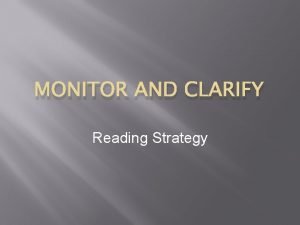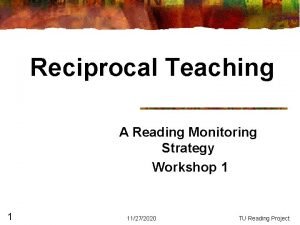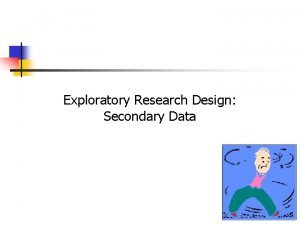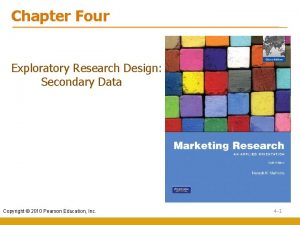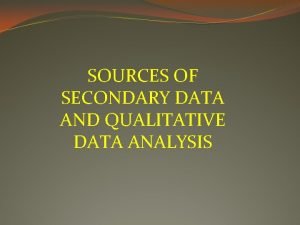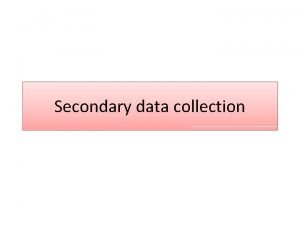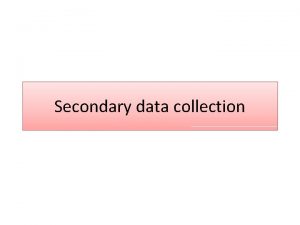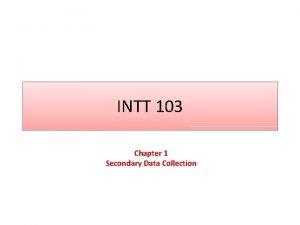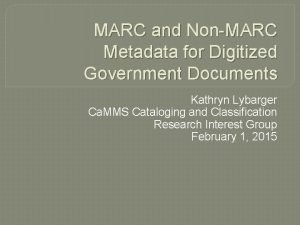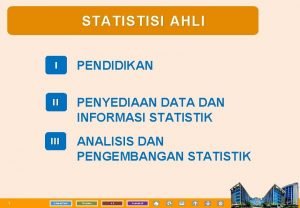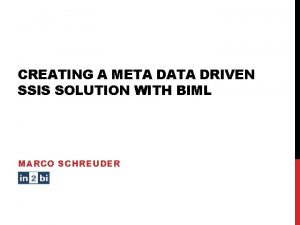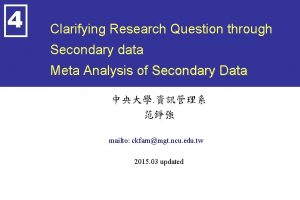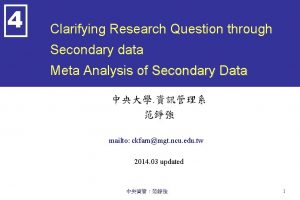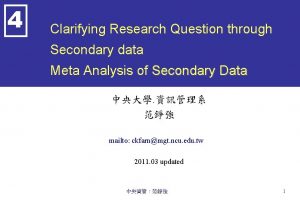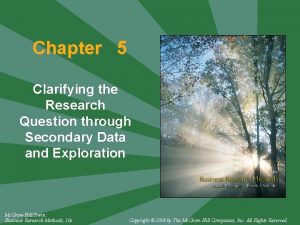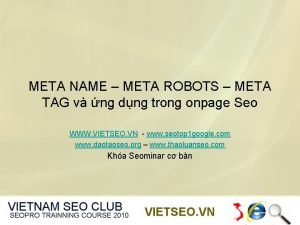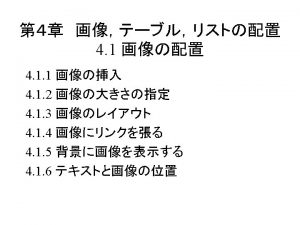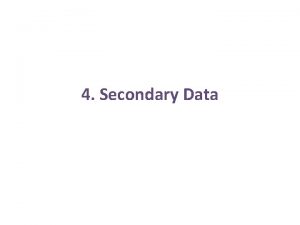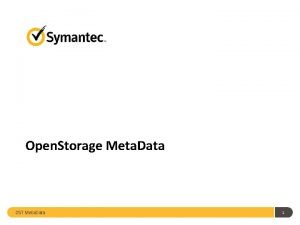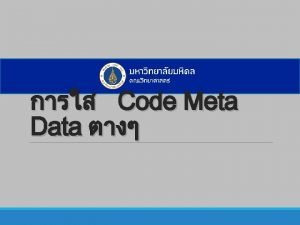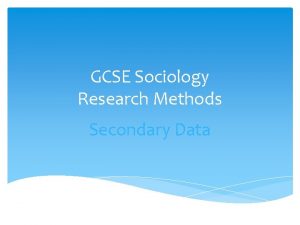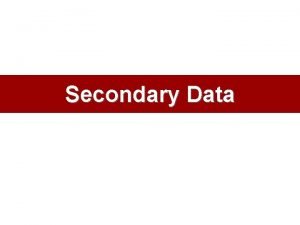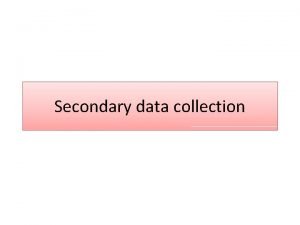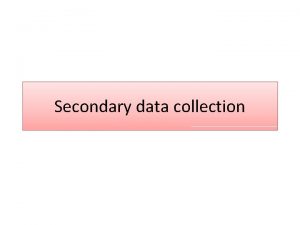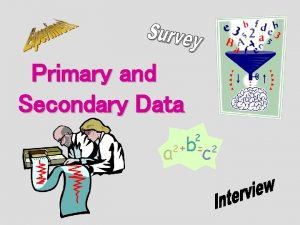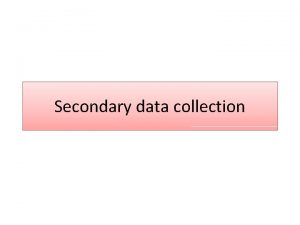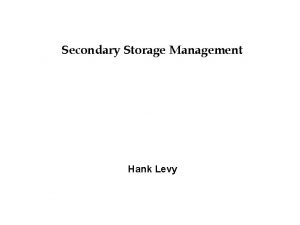4 Clarifying Research Question through Secondary data Meta







































- Slides: 39

4 Clarifying Research Question through Secondary data Meta Analysis of Secondary Data 中央大學. 資訊管理系 范錚強 mailto: ckfarn@mgt. ncu. edu. tw 2012. 03 updated 中央資管:范錚強 1


Learning Objectives Understand. . . The purpose and process of exploratory research. The two types and three levels of management decision-related secondary sources. The five types of external information and the factors for evaluating the value of a source and its content. 中央資管:范錚強 3

Learning Objectives Understand. . . The process of using exploratory research to understand the management dilemma and work through the stages of analysis necessary to formulate the research question (and, ultimately, investigative questions and measurement questions). What is involved in internal data mining and how internal data-mining techniques differ from literature searches. 中央資管:范錚強 4

Clarifying the Research Question Reduces Information Overload “Executives today are at risk of drowning in an ocean of technology-generated data. One possible response to data overload is to tune out completely, but that only takes the problem to the other extreme. A better response is to make the company’s business model as simple and as transparent as possible and to figure out exactly which measures are needed to illuminate the model’s success. ” Robert J. Thomas, Executive Director, Accenture’s Institute for High Performance Business 中央資管:范錚強 5

Exploratory Phase Search Strategy Discovery/ Analysis Secondary Sources Expert Interview Search Strategy Group Discussions Individual Depth Interviews 中央資管:范錚強 6

Integration of Secondary Data into the Research Process 中央資管:范錚強 7


Objectives of Secondary Searches Expand understanding of management dilemma Gather background information Identify information that should be gathered Identify sources for and actual questions that might be used Identify sources for and actual sample frames that might be used 中央資管:范錚強 9

Conducting a Literature Search Define management dilemma Consult books for relevant terms Use terms to search Locate/review secondary sources Evaluate value of each source and content 中央資管:范錚強 10

文獻收集的 具 Google/Google Scholar SFX® is the most widely used link server and the linking solution of choice for over 1, 500 libraries worldwide. 電子資料庫,如:中央大學圖書館網頁 電子期刊查詢 (SFX) 期刊資料/資料庫 中央資管:范錚強 11

Levels of Information Primary Sources: Memos Letters Interviews Speeches Laws Internal records Secondary Sources: Encyclopedias Textbooks Handbooks Magazines Newspapers Newscasts 中央資管:范錚強 Tertiary Sources: Indexes Bibliographies Internet search engines 12

Integrating Secondary Data 中央資管:范錚強 13

The U. S. Government is the world’s largest source of data 中央資管:范錚強 14

Information Sources Indexes/ Bibliographies Directories Dictionaries Types Handbooks Encyclopedias 中央資管:范錚強 15

Evaluating Information Sources Purpose Format Scope Evaluation Factors Audience Authority 中央資管:范錚強 16

The Evolution of Data Mining Evolutionary Step Investigative Question Enabling Technologies Characteristics Data collection (1960 s) “What was my average total revenue over the last five years? ” Computers, tapes, disks Retrospective, static data delivery Data access (1980 s) “What were unit sales in California last December? ” Relational databases (RDBMS), structured query language (SQL), ODBC Retrospective, dynamic data delivery at record level Data navigation (1990 s) “What were unit sales in California last December? Drill down to Sacramento. ” Online analytic processing (OLAP), multidimensional databases, data warehouses Retrospective, dynamic data delivery at multiple levels Data mining (2000) “What’s likely to happen to Sacramento unit sales next month? Why? ” Advanced algorithms, multiprocessor computers, massive databases Prospective, proactive information delivery 中央資管:范錚強 17

Data Mining in Business 中央資管:范錚強 18

Data-Mining Process 中央資管:范錚強 19

The Business Research Process 中央資管:范錚強 20

Stage 1: Clarifying the Research Question Management-research question hierarchy process begins by identifying the management dilemma 中央資管:范錚強 21

Management-Research Question Hierarchy 中央資管:范錚強 22

Formulating the Research Question 中央資管:范錚強 23

Types of Management Questions 中央資管:范錚強 24

The Research Question Break questions down Examine variables Determine necessary evidence Fine-Tuning Set scope of study Evaluate hypotheses 中央資管:范錚強 25

Investigative Questions Performance Considerations Attitudinal Issues Behavioral Issues 中央資管:范錚強 © 2002 Mc. Graw-Hill Companies, Inc. , Mc. Graw-Hill/Irwin 26






溝通 Who says what, to whom, how and with what effect? Who: 發訊者 Whom: 收訊者 How: 媒介、 訊息 What effect: 解碼、收訊者事後行為 中央資管:范錚強 32







 Clarifying the research question
Clarifying the research question Formulating and clarifying the research topic
Formulating and clarifying the research topic Formulating and clarifying the research topic
Formulating and clarifying the research topic Formulating and clarifying the research topic
Formulating and clarifying the research topic Formulating and clarifying the research topic
Formulating and clarifying the research topic Directional and non directional hypothesis
Directional and non directional hypothesis Formulating and clarifying the research topic
Formulating and clarifying the research topic Meta synthesis vs meta analysis
Meta synthesis vs meta analysis Levels of questions examples
Levels of questions examples Example of researchable and non researchable
Example of researchable and non researchable Clarifying roles and responsibilities
Clarifying roles and responsibilities Spellers clarifying phrase
Spellers clarifying phrase Purposeful listening definition
Purposeful listening definition Clarify reading
Clarify reading Clarifying for comprehension
Clarifying for comprehension Research design for secondary data
Research design for secondary data 雙向道
雙向道 Exploratory research secondary data
Exploratory research secondary data Qualitative
Qualitative Syndicated data vs secondary data
Syndicated data vs secondary data Data collection secondary data sources
Data collection secondary data sources Sources of content analysis
Sources of content analysis Primary data and secondary data
Primary data and secondary data Primary data
Primary data What is the primary data
What is the primary data Secondary data
Secondary data Primary data and secondary data
Primary data and secondary data What is primary data
What is primary data Non-marc meta data
Non-marc meta data Metadata adalah
Metadata adalah Meta data driven
Meta data driven Leveraging secondary associations
Leveraging secondary associations Through one man
Through one man Dome of furcation
Dome of furcation Conversation of timber
Conversation of timber Who wrote night of the scorpion
Who wrote night of the scorpion Question without question words
Question without question words Closed question
Closed question Remarks adalah
Remarks adalah If vs whether
If vs whether













